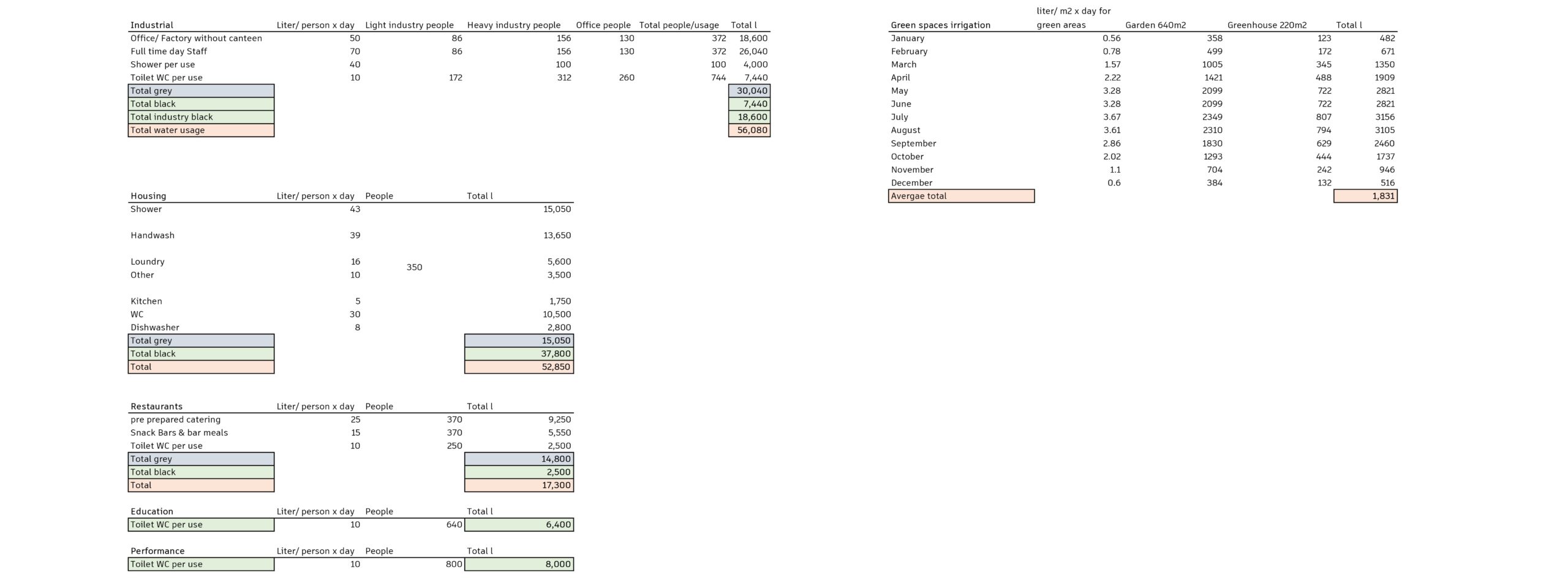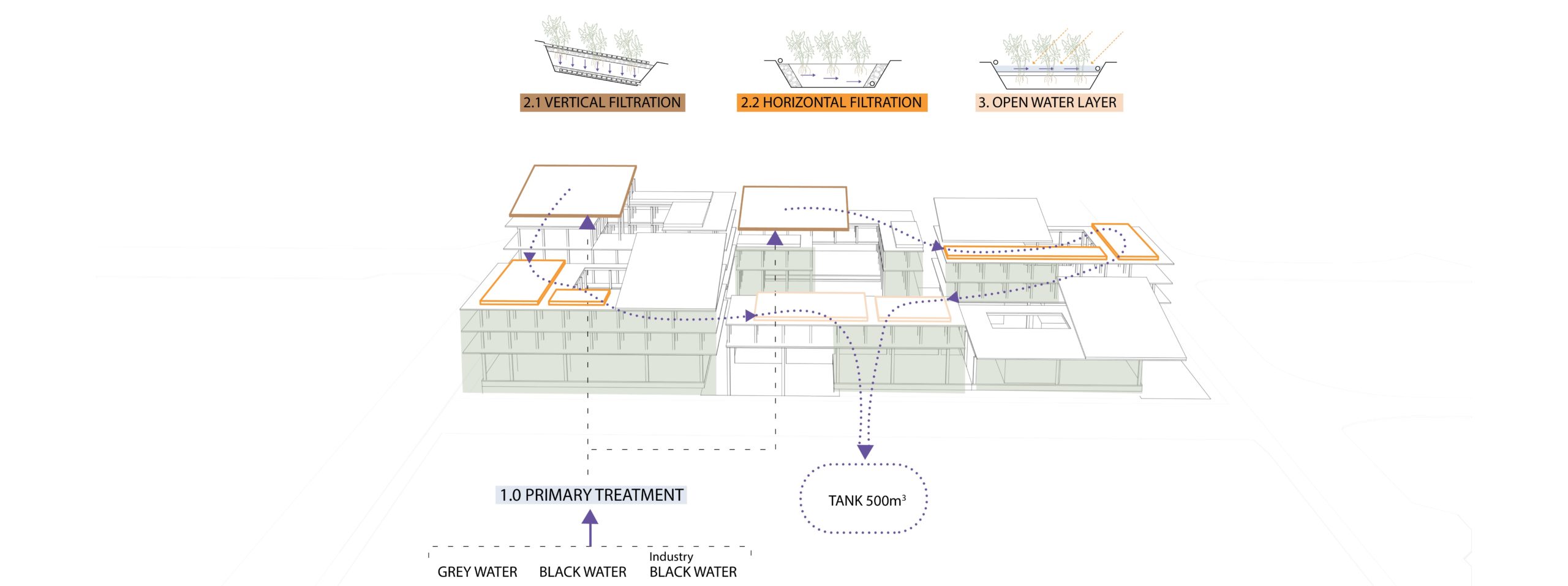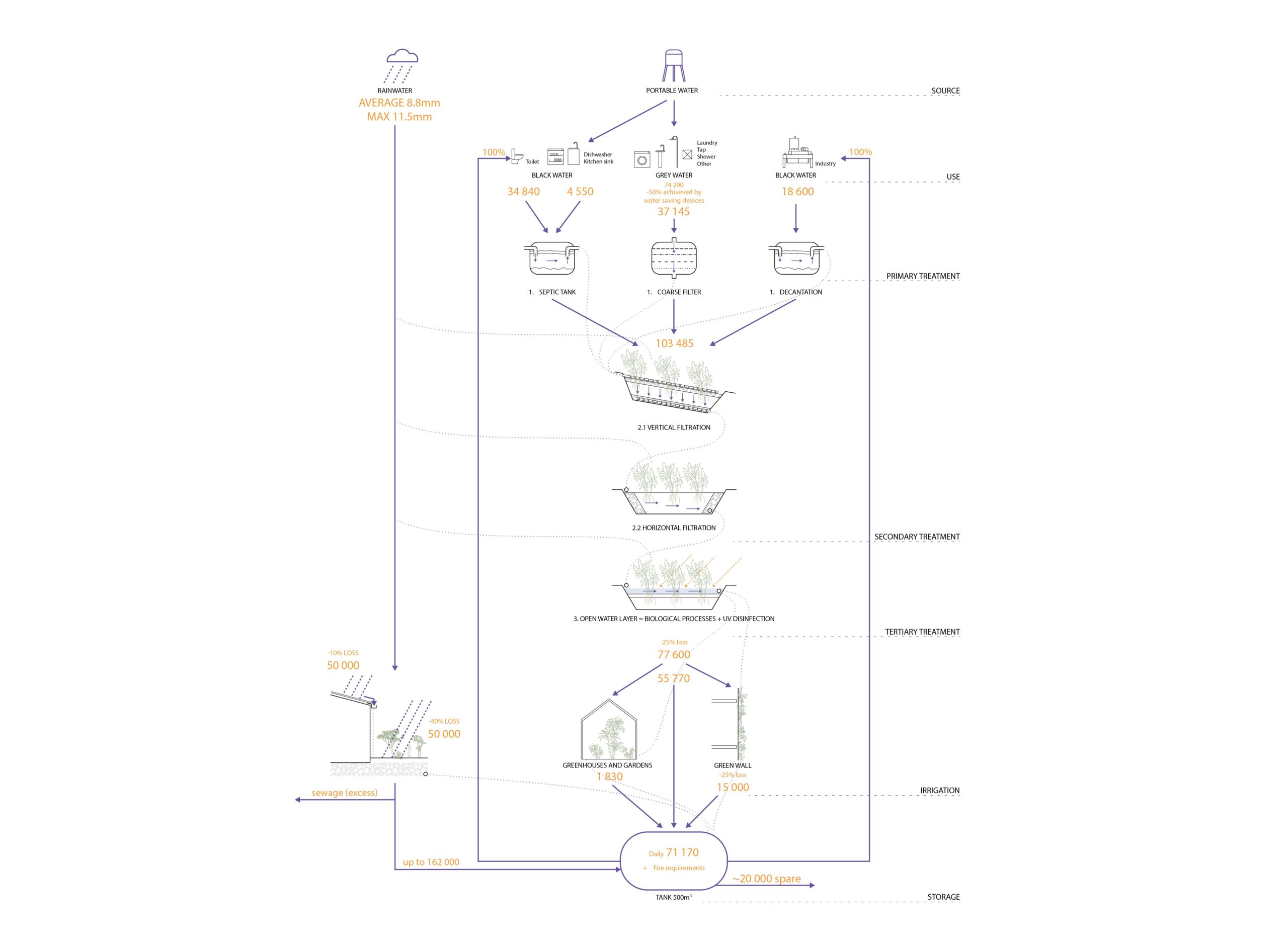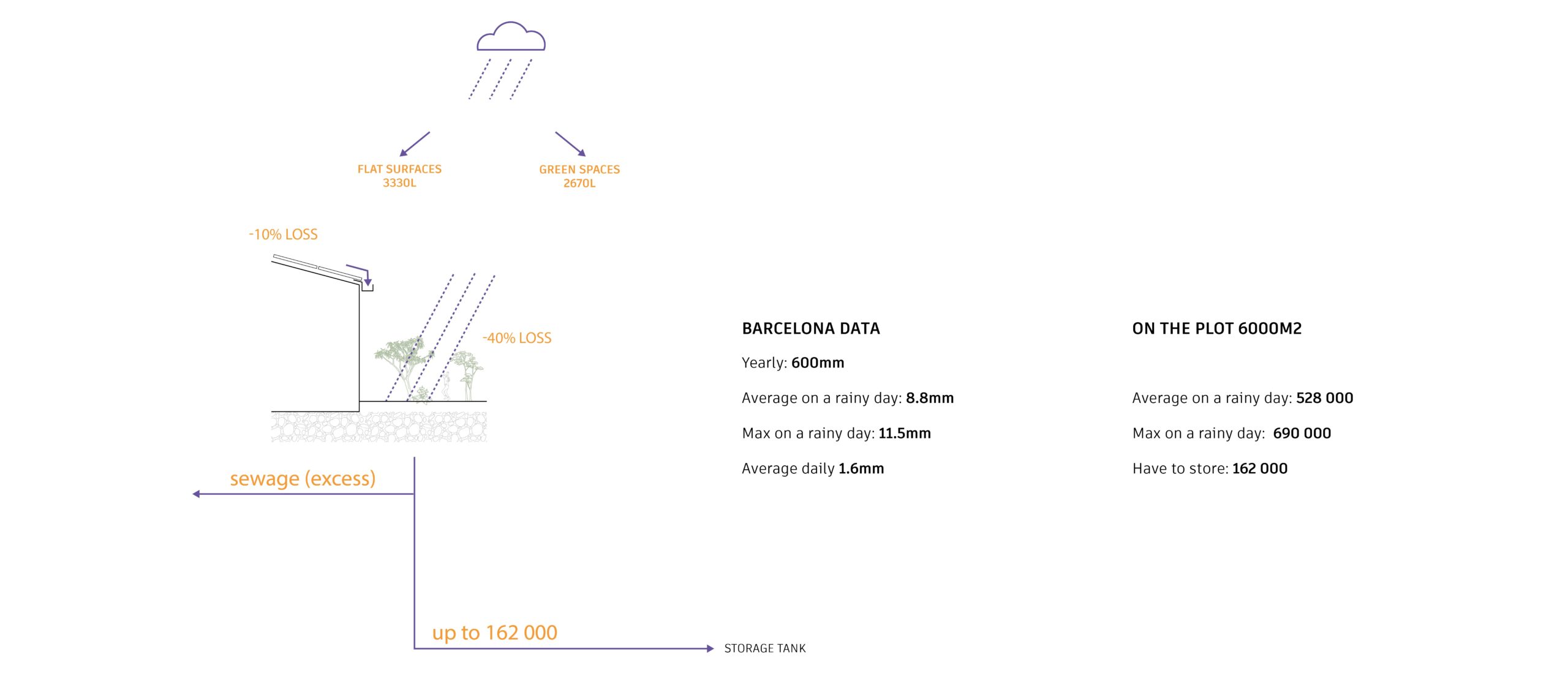

Treatment of water through nature based solutions was chosen as it allows to maintain the initially intended amount of green spaces on the roof, while still providing space for food production and decreasing the amount of water required for irrigation.
After going through primary treatment where all solids are removed from the wastewater it goes through three steps of filtration. Gravity will be used to transport water from one green space to the next.


In the building portable water is supplied to showers, taps, laundry etc. – uses that require portable water by the local regulations. However, for toilets and industry use this portable water and domestic black water are filtrated through nature based water treatment system, enclosing toilets and industry in a loop.

Assuming that public sewage can deal with the average 8.8mm rainfall a day, the building will be designed to deal with the surplus in case of above average water load. According to data from 1999-2019 maximum daily precipitation can reach 11.5mm. Meaning, on site 162 000l of water will be absorbed and stored for firefighting needs.
Important to note, that the building currently filtrates enough water to supply all parts where it can be reused like toilets, industry, and irrigation. If the use of rainwater was allowed for showers, taps, etc. use of portable water in the building could be close to 0. Full self-sufficiency can not be achieved due to rain inconsistencies.


According to baseline calculations 142 461l of water would be required daily, however with recycling and water saving devices this amount can be lowered by 71% to 71 170l a day.

